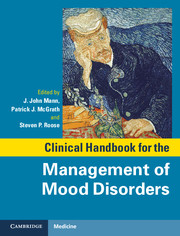
- Cited by 2
-
Cited byCrossref Citations
This Book has been cited by the following publications. This list is generated based on data provided by Crossref.
Fourcade, Elizabeth Wolf and Lapidus, Kyle A. B. 2016. Ketamine for Treatment-Resistant Depression. p. 13.
Ahmad, Dua’a Goecke, Roland and Ireland, James 2021. Pattern Recognition. ICPR International Workshops and Challenges. Vol. 12666, Issue. , p. 744.
- Publisher:
- Cambridge University Press
- Online publication date:
- May 2013
- Print publication year:
- 2013
- Online ISBN:
- 9781139175869
- Subjects:
- Psychiatry and Clinical Psychology, Medicine, Psychiatry


